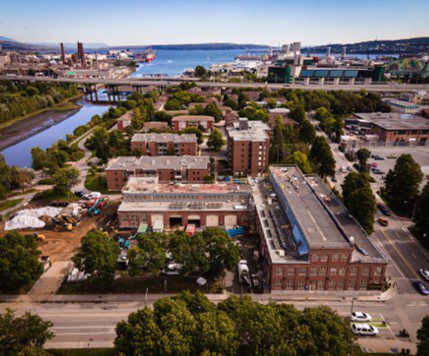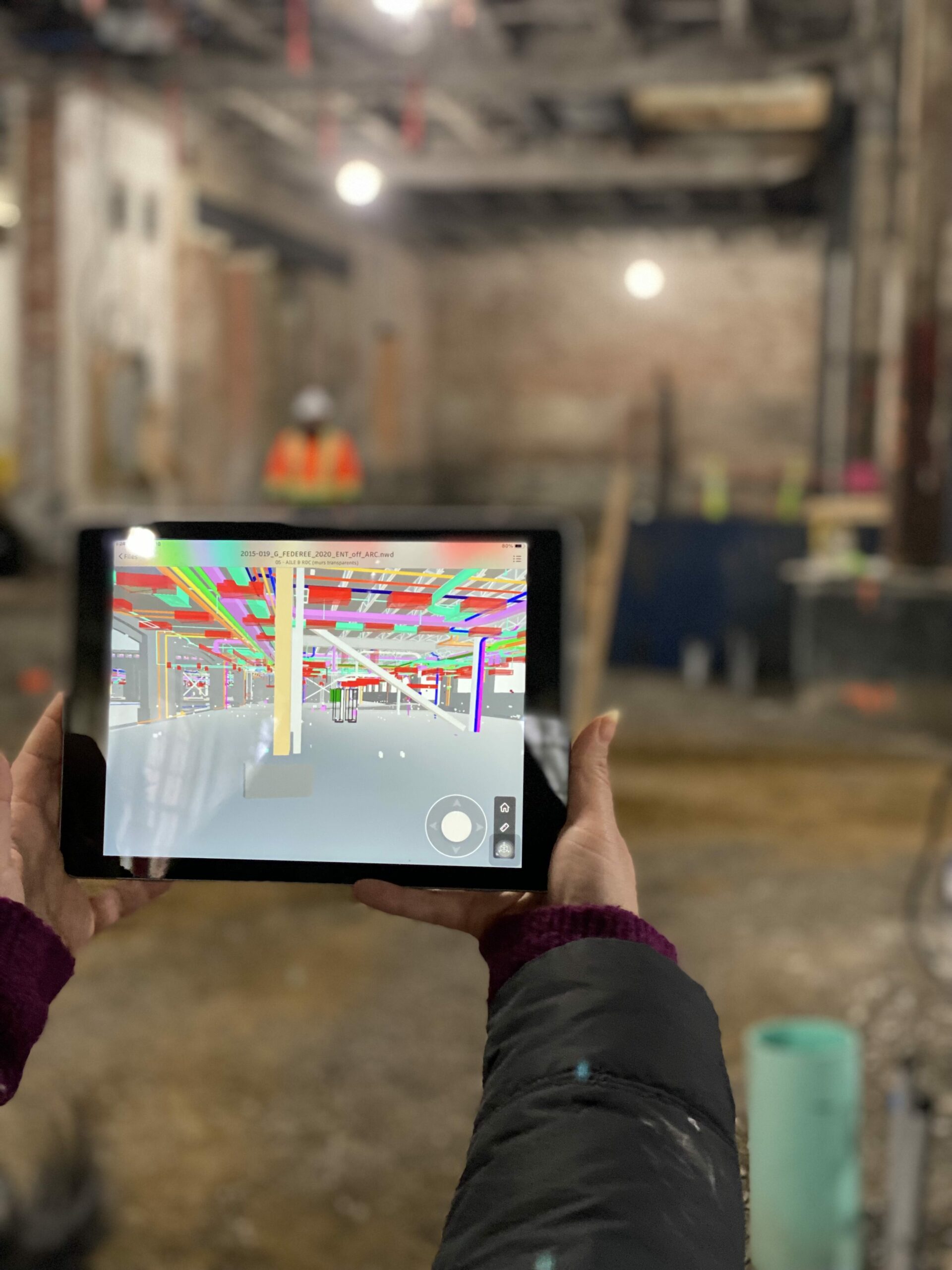As we embark on this most peculiar of decades, a number of industrial sectors, construction among them, are staking their future on innovation to meet the challenges ahead. Often, this means making the transition toward Building Information Modeling or BIM, though complementary approaches may also be worth considering.
It can be complicated to contemplate all the solutions that emerge out of this ebullient technology market: drones, robots, AR/VR headsets, portable laser scanners and the list goes on. There are as many tools as there are possibilities! Knowing the current uses can be a point of departure for determining which solutions respond best to your needs.
For example, tracking progress on a job site is a common challenge. Whether clients, professionals or contractors, everyone wants to be able to see what’s been done, what needs to be done next and what to do after that. Collecting that data precisely and regularly, however, involves any number of technical and human challenges!
ANECDOTE
Going back a couple of years, I see myself as a young intern engaging in my first experience in the business, hard hat on my head and construction boots on my feet. In those days, I personally had to follow the progress of pouring the concrete for the construction of a skyscraper on the Malaysian island of Borneo. Every Monday morning, I got on the boat in order to take a couple of photos to document progress visually. Visuals? Before accessing them, you had to go through all the current files, sub-files and archived files where the snapshots were kept. Plus, the quality and precision could have been better!
Despite the exotic location, the methodology will be familiar to many of you.
TOOLS
Today, there are practical alternatives to monitor progress such as 360-degree cameras mounted on a hard hat. This kind of solution can be deployed on a construction site on a daily basis without creating any additional constraints for the work crews. Among the advantages are the following:
- Simple to use and put into practice
- Little effort to capture photos
- A compact solution, adapted to the construction site
- Relatively low cost in comparison to other solutions

Figure 1- Source adapted from the content on OpenSpace.ai
If identifying the right tools constitutes a good start in deploying innovation, the processes themselves are equally important. What’s the benefit of having great 360-degree photos of my site if I have to manually record the date and place or organize them one at a time in the files nobody can access?
Use of this kind of camera on site must be combined with a process for managing and archiving them, which is available from suppliers such as HoloBuilder, StructionSite, Cupix or OpenSpace.ai. These innovative companies use AI advanced algorithms and are causing true disruption in the industry.
CASE STUDY
A propos of this, BIM One recently supported the general contractor Construction Durand to deploy this type of solution in the transformation project for the F.-X. Drolet building in Quebec, for the City of Quebec.

Figure 2- Drolet building, heritage building, City of Quebec
THE SOLUTION
The project included a BIM component, a solution proposed by OpenSpace.ai who were retained for their ability to develop models to visualize the project in combination with on-site visual capturing. Whether from the offices or on site, access is provided by an online platform that centralizes photos and video, which allows to follow progress from a specific time via an interactive map of the construction site.
The project is still ongoing, but the execution phase being well advanced, we are in a position to share some of the uses which were instrumental in facilitating project management. Most notably:
1. Validation of construction viability and planning: Allows rapid communication on the condition of the construction site and develop optimal logistics based on captured visuals.
2. Collaboration and communication: Clients, professionals and contractors don’t always have the occasion to meet on the work site and talk to each other in situ, especially during the pandemic. The tool allows for discussing the weekly captures in a meeting from a distance but in person nevertheless and the team can ensure agenda items are presented in the actual context of the ongoing work site activities.
” The captures taken on site facilitate our discussions with the professionals in the meeting. There is no problem understanding each other; in a few seconds, everyone sees the context and we can focus on looking for solutions. “
Gabriel Durand, Director of Operations at Construction Durand
3. Validating interdisciplinary coordination: The platform allows validating the real site conditions and provides constant feedback that everything is actually constructible. For example, some of the electrical conduits had been moved and we were able to anticipate the impact this would have on the placement of the ventilation ducts and then, revise the plans prior to the mechanical installer starting the work, thus avoiding any unneeded or unnecessary efforts.
4. Progress monitoring: By offering the possibility of comparing captures at specific dates, the contractors [CT2] can be transparent and keep clients informed on a continuous basis.
5. Change orders and RFIs: When change orders are emitted, it’s very useful to be able to refer to dates and specific places to evaluate and justify additional work to be done, especially when walls and ceilings have already been closed.

Figure 3- Virtual models produced by Construction Durand, CCM2, BPA and EMS
6. Follow-up on as-built modifications: The functionality to compare differences between on-site captures and the building model allows us to continuously validate the position of installations on the construction site and establish a high level of confidence for the client, even before submission of the models and the as-built plans at project completion.

Figure 4- Example of on-site vs. model comparison
7. Archiving information for the client: Beyond the use during the execution phase of the project, captures can be archived and consulted during the operations phase to provide the client with pertinent information that can eventually initiate the development of a digital twin.
The applications we have put into place for this project extend way beyond simply monitoring progress and all gravitate around a central idea:
Obtaining a quality result during the execution phase and facilitate continuous quality decision-making.
Using this as a point of departure, one can imagine a multitude of other interesting uses; for example, the possibility of automating follow-up by object recognition (interior walls, suspended ceiling, doors, etc.) or, in the context of BIM, being able to link this information with information contained in the models and thereby run time simulations based on this actual data.
In short, the potential provided by this kind of solution seems interesting, but first it’s necessary to clearly identify your need and define the uses that may be interesting in the context of your project. Using a 360-degree camera on a hard hat, for example, may be less optimal than a laser scanner to precisely record the dimensions of an existing object or a camera-drone to determine zones that pose a safety and security risk for people.
Some solutions may not be worth it in terms of cost, required expertise or ease of application. It’s therefore important to determine your needs and not overlook the human factors that arise. Indeed, even in the case of simple solutions, team building can’t be taken for granted.
If you would like assistance in identifying the solutions that best meet your needs and applying them for a BIM project, please don’t hesitate to contact us. It will be our pleasure to accompany you in the transformation of your organization.


